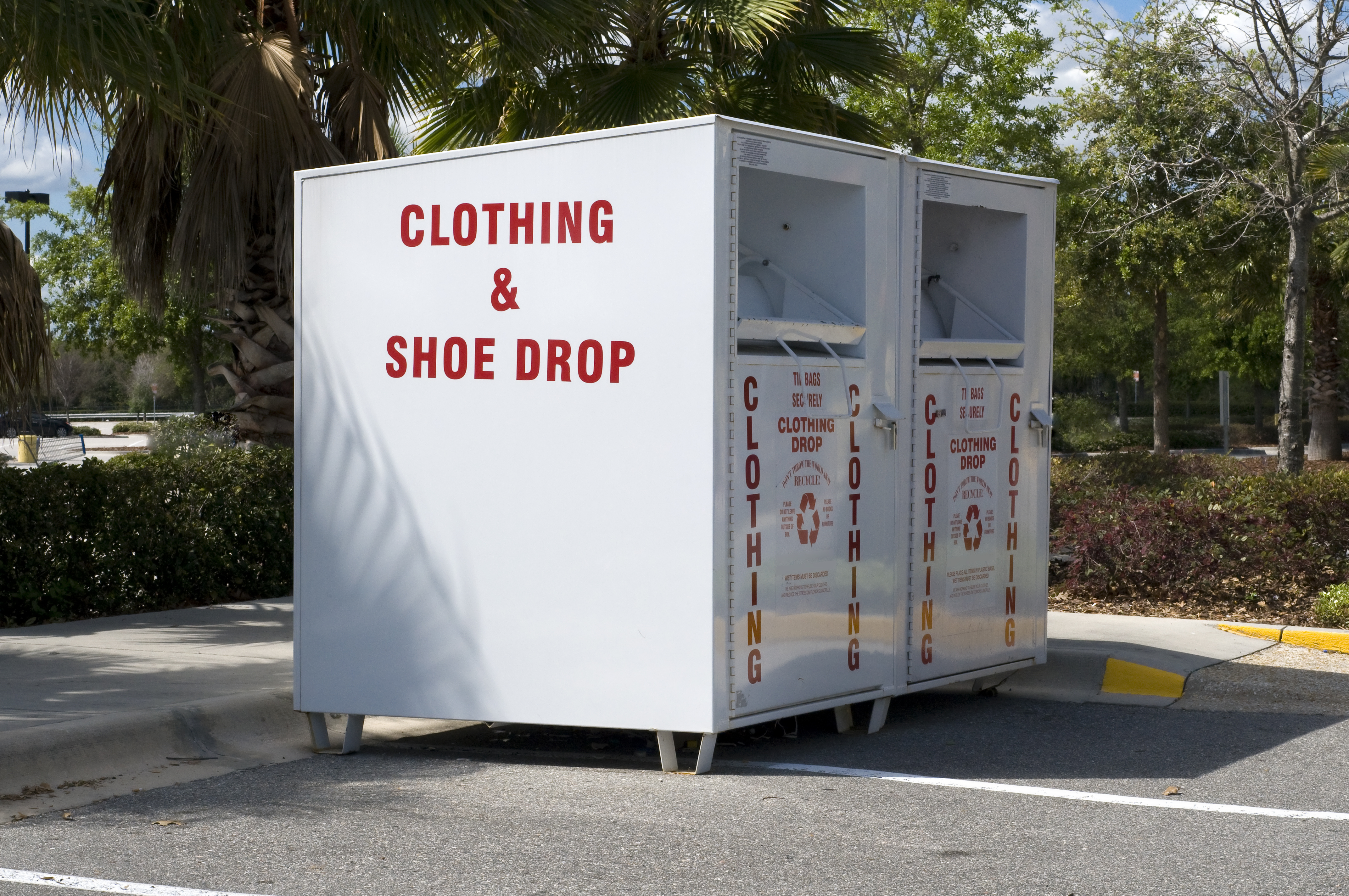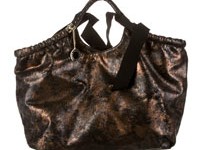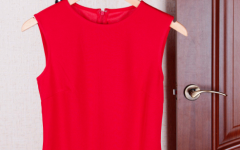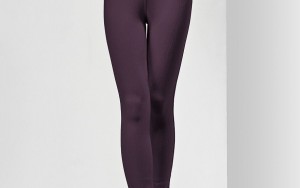When you buy something new to wear you think (hopefully!) about how wonderful you will feel in it, where you will wear it, how it will keep you warm—in other words, everything to do with what you will do with it NOW. What doesn’t generally come to mind initially is what you will do with the item when it no longer serves you.
That’s not surprising – there is nothing fun about imagining the item stained, worn out or too big/small all of which render it unwearable.
There does come a time, however, when the item has seen better days and must leave your closet. At that point, I am sure you are doing all the right things to be conscientious about what happens to them. The item had a good life with you and now it is time to pass it on so you:
- periodically clean out your closet of things that are worn out, do not fit or you’ve stopped wearing for myriad reasons.
- have a big pile sitting on your bedroom floor.
- feel energetically lighter as you look in your closet and see only what you love and wear hanging there, and
- feel a sense of peace and goodwill as you pack up the clothes headed for charity.
It’s a win-win, right?
Well, maybe…or maybe not.
While visions of less fortunate people happily leaving the thrift store with goodies from your closet feels honorable and comforting, believe it or not, that is not usually what happens.
In order to consider the full impact of your clothing choices from pre-production through its afterlife, you must take a candid look at what really happens to your clothes once you drop off your donation. I promise it is eye-opening!
As with the production of clothing, there is a mythical fairytale belief floating around that your cast-offs are someone else’s treasure. Who wouldn’t want to believe this? While there is some degree of truth to it, it is much less than you would imagine. Instead, the impact your donations have are much more far-reaching than you would suspect from the persistent fairytale.
What can you do to minimize the footprint your cast-off clothing has on the environment, other people and different cultures?
Here are 3 steps to help you make good decisions about your clothing’s afterlife:
1. Never Throw Your Clothes In The Trash
Even clothes that are stained or in disrepair can be donated. If you toss them in the trash they inevitably end up in a landfill where their decomposition is severely hampered. And, in fact, at least here in Massachusetts, as of 2023, it is illegal to throw textiles in the trash. There’s good reason for that. Even those items that are biodegradable take many, many times longer to break down in a landfill than in the open air. Decomposition requires light and oxygen neither of which is plentiful in a landfill! According to Green Living Tips “Even newspapers dumped in landfill have been known to be still readable after many years.”

It is common to hear lots of statistics thrown around about how long it takes something to biodegrade. According to www.greenlivingtips.com, “decomposition is very dependent on the environment where the material is decomposing. For example, look at the difference between how fast steel rusts (a form of decomposition) in a humid salt air environment such as the coast vs. a dry environment like the desert.” By throwing something in a landfill you severely hinder its ability to decompose as quickly as it might when open to the elements. And, if you live in a very dry climate the decomposition process will be slowed down as well.
Of course, I am certainly not suggesting that you just toss all your unwanted clothes in your backyard and hope for the best. Clearly this is not an option on so many levels and could take a few years to never for things to full disintegrate, but what do you do instead?
2. Option A: Keep The Cycle Going By Consigning
Everywhere you look consignment shops are popping up. Since people are constantly culling their wardrobes of their ‘mistakes,’ clothes that no longer fit or are damaged, or items they have tired of wearing, there is no shortage of pre-owned clothing to be had and a consignment shop is a good place to keep their usefulness going.
Usually the items need to be less than two years old, in great condition and many consignment stores specify certain brand names they know will sell. If you can meet those requirements, consigning is a great way to recoup some of your cost, make someone else happy and keep the clothes in circulation. A triple win!
This is a picture of a consignment shop near me (sadly, it has since closed, but more and more brick and mortar consignment shops are popping up everywhere) – Mint Boutique —

There are even online consignment stores like https://www.therealreal.com/ and I’ve become a fan of https://www.thredup.com/.
It is important to know that even if you consign some of your clothing (the items that don’t sell) could still end up at a charity. This brings us to the next, very important concern.
3. Understand The Truth About Clothing Donations
The most common place discarded clothing ends up is at a charity where, according to Elizabeth Cline, author of, Overdressed: The Shockingly High Cost of Cheap Fashion, “Only 20 percent of the clothes we donate are sold in charity thrift shops (There’s simply too much to resell it all!). About half of secondhand clothing is turned into fibers or wiping rags. The rest is shipped overseas as used clothing.”
We want to believe that someone else will be thankful for our donations—it is human nature, but is it true? Elizabeth Cline expresses it well when she says, “Most Americans are thoroughly convinced there is another person in their direct vicinity who truly needs and wants our unwanted clothes. This couldn’t be further from the truth. Charities long ago passed the point of being able to sell all of our wearable unwanted clothes. Used clothing is now the United States’ number one export by volume, with the overwhelming majority sent to ports in sub-Saharan Africa.”
“Well, that’s okay,” you say, “Let’s spread the wealth and help out other people across the globe.” At first glance this seems like a very charitable idea and it offers some peace of mind that the clothing is going to a good home and where it is needed and appreciated. But, the truth goes much deeper and is considerably more complex than that.

The article by Robyn Curnow and Teo Kermeliotis, “Is Your Old T-Shirt Hurting African Economies,” spells it out. “‘The long-term effect is that countries such as Malawi or Mozambique or Zambia can’t really establish or protect their own clothing industries if they are importing second-hand goods,’ says Andrew Brooks, lecturer at King’s College London and co-author of a study called ‘Unravelling the Relationships between Used-Clothing Imports and the Decline of African Clothing Industries.’
‘Your t-shirt may be quite cheap for someone to buy, but it would be better if that person could buy a locally manufactured t-shirt, so the money stays within the economy and that helps generate jobs,’ he adds.”
As a result, the African economy loses since their country’s designers, manufacturers and retailers cannot compete with the low cost of imported second hand clothing or even new cheap fashions from Asia.
Robyn Curnow and Teo Kermeliotis continue by adding, “To deal with the problem, a number of African countries have banned imports of second-hand clothes in recent years as part of efforts aimed at protecting their national textiles industries. Amongst them are the continent’s two biggest economies — South Africa and Nigeria — while many more are also debating restrictions.”
Clearly, the only real solution is for each of us to buy less and wear what we buy (see part 1 of this series, “6 Steps to Green Shopping Habits and Fabric Choices” – HyperLINK), but as you know, even with the best of intentions, that is often easier said than done.
While disposable fashion is a real issue these days, most of the women with whom I work are not chasing trends or interested in only being seen sporting the latest style. My clients and readers want clothing they feel beautiful wearing, styles that are current and meet their lifestyle needs. And, in fact, many of them profess a deep desire to have fewer clothes that they wear more often.
Where things often go wrong for them is when they can’t find what makes them feel beautiful and they keep shopping and buying things that are so-so or good enough and never truly feel happy with what they own. They watch helplessly as their closets get more crammed with stuff and yet they still have trouble getting dressed. So many of these items later end up being donated—often with tags still on them. All of this changes, however, once they understand how to choose a wardrobe that excites them and that they truly want to wear. That is when they wear items more often and keep them longer. Fewer items end up in landfills or charities or fly halfway across the world to potentially subvert another country’s fashion industry.
My purpose in sharing this information is to bring to light the complexity of the fashion industry and the far-reaching effects our wardrobe choices have on the world at large. Awareness is always the first step in making changes. I know that my research has opened my eyes and I hope that you, too, have developed a new (or growing) appreciation for the full impact of each and every wardrobe selection you make. Simply keep this in mind the next time you shop and it will inspire to feel confident about the choices you make and will wear often. (And, if you don’t know how to make choices you love wearing, I can help and would be happy to chat with you about what’s frustrating you and share ideas about services I offer than can make it easier. You can set up a time here: Talk to Ginger
A very special thanks to Janet Wood-Cunliffe, the creator of the ‘Fashion Fit Formula’ for her help in finding resources and her passion for fashion and a healthy global environment.








2 Responses
Fascinating. I’ve been wondering about this for a while – I think it’s pretty similar here in the UK.
I suspect you are right that it is a global issue so anything we can do anywhere to help is great!